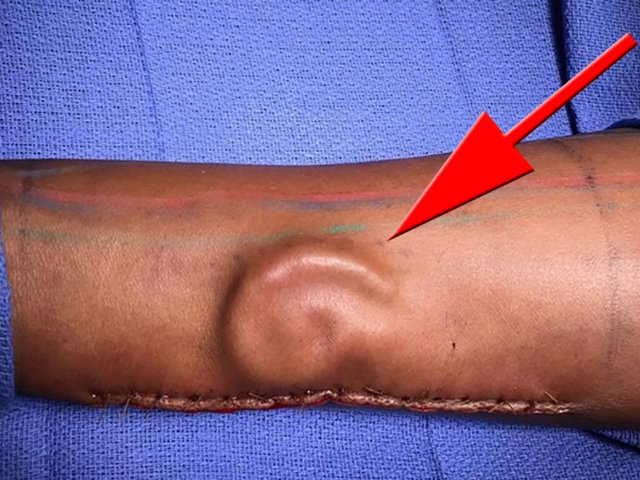Army private Shamika Burrage lost her eartwo years ago in a car accident, according to a press release by the US Army.
Now, plastic surgeons are growing her a new ear in an innovate surgery.
Surgeons took cartilage from her ribs and placed it under the skin of her forearm to grow.
“(The ear) will have fresh arteries, fresh veins, and even a fresh nerve so she’ll be able to feel it,” Lt. Col. Owen Johnson III said in the press release.
In the latest of innovative reconstructive surgery techniques, plastic surgeons are growing an ear from a woman’s cartilage, according to a press release by the US Army. The ear being grown will replace the ear that Army private Shamika Burrage lost two years ago in a nearly fatal car accident.
Burrage lost her ear when, on her way back from leave, the front tire of her car blew out, causing the car to flip several times, according to a press release from the US Army. Burrage, who was in the car with her cousin, doesn’t remember much about the incident.
“I remember people walking up to us, asking if we were OK and then I blacked out,” she said in the press release. Burrage was told by doctors that if she had gone 30 more minutes without receiving medical attention, she would have bled to death.
Burrage underwent rehabilitation and counseling, but she was still uncomfortable with the way she looked. So, according to the press release, she began to look into reconstructive surgeries. It was then that doctors explained to Burrage that she had the option to undergo a new reconstructive surgery in which they would grow a new ear from harvested cartilage.
The surgery is a type of microvascular free tissue transfer, or a procedure in which tissue such as skin, muscle, or bone is taken from one area of the body to reconstruct another, according to John Hopkins Medicine.
Burrage, now 21, was hesitant at first, but ultimately decided to go through with the procedure.
Plastic surgeons carved a new ear out of cartilage taken from the Burrage’s ribs, which they then placed under the skin of her forearm to allow the ear to grow.
“The whole goal is by the time she’s done with all this, it looks good, it’s sensate, and in five years if somebody doesn’t know her they won’t notice,” Lieutenant Colonel Owen Johnson III, chief of plastic and reconstructive surgery at William Beaumont Army Medical Center, said in the press release.
To avoid as much scarring as possible, Johnson decided to place the cartilage into Burrage’s forearm to allow for new blood vessels to form in a process called neovascularization. “(The ear) will have fresh arteries fresh veins and even a fresh nerve so she’ll be able to feel it,” Johnson said in the press release.
The cutting-edge surgery won’t only improve the appearance of Burrage’s ear, it will also allow her to hear because Johnson was able to open the ear canal back up.




